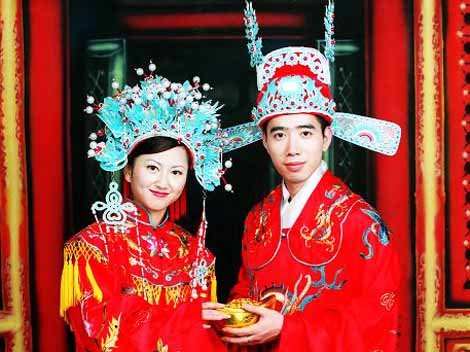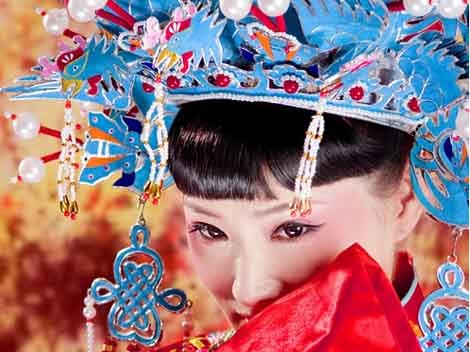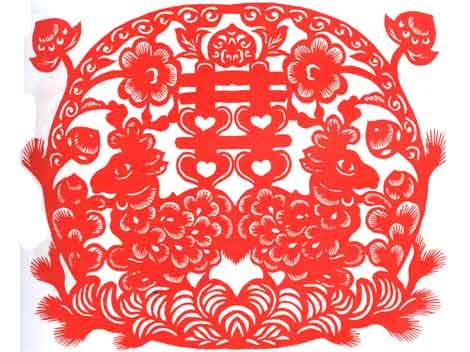Traditional Chinese wedding customs are considered as the foundation of rites in traditional Chinese culture. A wedding is usually a grand occasion with overly-elaborate formalities. There are eight major procedures of a wedding, including proposal making, birthday matching, marriage divination, betrothal gifts presenting, wedding date fixing, dowry urging, welcoming the bride to the wedding and performing the formal wedding ceremony.

The procedure of birthday matching was the process in which the boy's family asked the matchmaker to go to the girl's family to enquire about her name and date of birth. Then, the boy's parents would send the girl's and their son's names and birthdates to a sorcerer or fortune teller for divining to see if the marriage between the two would be appropriate. The foretelling of the luck of the marriage was what was called "marriage divination".

If according to Chinese astrology the couple was compatible and both families agreed to the marriage, the boy's family would then send betrothal gifts to the girl's family. The betrothal gifts mainly included clothes, jewelries, gold, silver and cash etc. In addition, a gilded silver coin bearing the word "qiu" (meaning "proposal") was among the gifts. The girl's family would send back another coin bearing the word "yun" (meaning "agreed") among their gifts presented in return. Thus, the marriage was confirmed.

Then, the two families would make arrangements for the wedding. When everything was ready, the boy's family would invite a fortune teller to choose a wedding date believed to bring the most luck to the couple based on the Chinese calendar mythology. After the date was fixed, the boy's family would send someone to inform the girl's family of it, which was part of the procedure of fixing the wedding date.
During the period between the wedding date settlement and welcoming the bride, the boy's family would customarily urge the girl's family to send her dowry in for bridal chamber decoration, otherwise the wedding could not be held on schedule. After being urged, the girl's family would begin to prepare the dowry, which would be sent to the boy's family on a chosen date. The amount and quality of the dowry would determine the girl's future status in her husband's family.
Welcoming the bride to the wedding and performing the formal wedding ceremony would be conducted on the same day, which was the climax of the whole wedding procedures. On the wedding day, the bridegroom's family would welcome the bride to the wedding in a bridal sedan accompanied by a wedding procession. With firecrackers exploding and band playing, the precession was a noisy and joyous show. As soon as the bride arrived at the groom's home, the couple would perform formal bows. The rituals were also called "bowing to Heaven and Earth", which were conducted to gain approval of the marriage from gods, divinities, ancestors as well as from parents, older generations, relatives and neighbors in the mortal world.
After the bowing rituals, the couple would enter the bridal chamber, followed by rituals like sitting on the bed, throwing happiness-embodying nuts and drinking the nuptial cup etc. After that, relatives and friends to the wedding would be treated to a wedding feast. Then, wedding guests, old and young, would play bridal chamber pranks and wouldn't leave till the dead of night. Thus, the wedding ceremony was finished.
Traditional Chinese wedding customs have been around for thousands of years. They may vary from place to place and time to time, but have been holding an important position in the lives of Chinese people, causing a far-reaching impact on the way the Chinese lead their lives.





